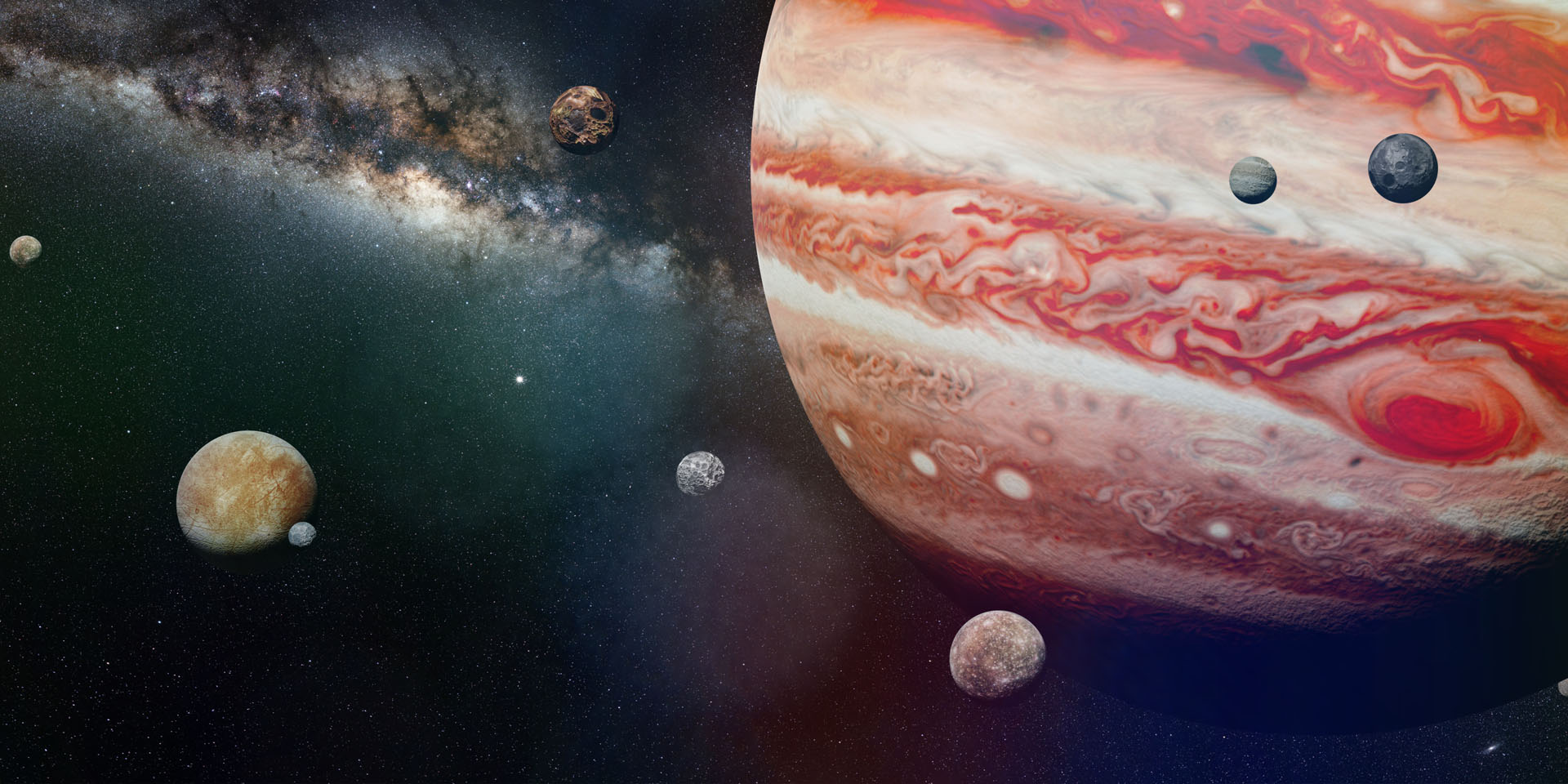
SUB.F | Jupiter
We’ve now successfully traversed the asteroid belt, and we are 1,196,000,666 kilometres further into our trip – a trip that is going to take us just short of five years, but it will be worth it.
Our next stop is the largest object in our solar system other than the sun.
Jupiter is huge – really huge; that’s why it’s named after the most powerful god of the Romans (though the Babylonians recorded it first, in around the 7th or 8th century BC.). Its mass is two and half times greater than all of the other planets in the solar system combined. In fact, it’s so big that some scientists think that Jupiter was on its way to becoming a star, but it just never made it. Jupiter is what we call a gas giant, and it’s composed mostly of hydrogen and helium, just like the sun.
 In 1610, Galileo Galilei saw not only Jupiter through a basic telescope, but also its four largest moons: Io, Europa, Ganymede and Callisto. His use of the telescope showed that Sun was the center of the solar system instead of the Earth; his teaching of this belief led to his trial and conviction for heresy. He spent the rest of his life under house arrest, forbidden to discuss his findings.
In 1610, Galileo Galilei saw not only Jupiter through a basic telescope, but also its four largest moons: Io, Europa, Ganymede and Callisto. His use of the telescope showed that Sun was the center of the solar system instead of the Earth; his teaching of this belief led to his trial and conviction for heresy. He spent the rest of his life under house arrest, forbidden to discuss his findings.
Until recently, Jupiter held the record as having the most moons in the solar system — 79 have been confirmed and named already, and it’s possible that there are over two hundred objects in orbit around it. However, in fall of 2019, a team of astronomers discovered 20 new moons orbiting Saturn, bringing its total to 82 and making it the new record holder. Jupiter’s Ganymede is still the largest of any moon discovered in our solar system so far.
Although Jupiter has a faint ring system, they are primarily made up of dust, which makes them difficult to see. Jupiter is most well known for The Great Red Spot, a huge storm (three Earths could fit inside it). It was first recorded in 1665 by Giovanni Cassini, and new data shows that it might actually be shrinking. Strangely, as it contracts, it’s also getting taller, and the color has been getting more intensely orange. The clouds and storms on Jupiter are made of ammonia crystals.
In 2016, the Hubble Space Telescope captured an amazing event on the North Pole of Jupiter. Jupiter, like Earth, has an Aurora (Northern Lights). But instead of a greenish color as on Earth, it appears to be an electric blue color.
Jupiter has the shortest day of the eight planets, taking just a bit less than ten hours to complete one rotation. A year on Jupiter, though, is another story. It takes 12 Earth years for Jupiter to go around the sun just once (but even that isn’t the longest year).
Two more missions are also in the works. NASA’s Europa Clipper is scheduled to launch sometime in the 2020’s, to perform a detailed investigation of the icy moon Europa, especially if it could have conditions favorable for life. The European Space Agency, ESA, will launch the JUpiter ICy Moons Explorer (JUICE) in 2022, to arrive in 2029. JUICE’s mission is to make detailed observations of Jupiter and its moons Ganymede, Callisto, and Europa.
Passing Jupiter and its many moons, we begin a trip of 642,270,000 thousand kilometres away – a mere two and a half years travel time, minus bathroom breaks. At the end of those two and a half years, you’ll be treated to an incredible sight.
Curriculum Reference Links
- Earth and Space / Building Blocks/ 1: Students should be able to describe the relationships between various celestial objects including moons, asteroids, comets, planets, stars, solar systems, galaxies and space.
- Earth and Space / Building Blocks/ 3: Students should be able to interpret data to compare the Earth with other planets and moons in the solar system, with respect to properties including mass, gravity, size, and composition.




